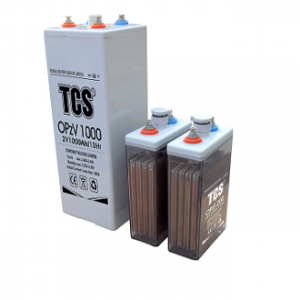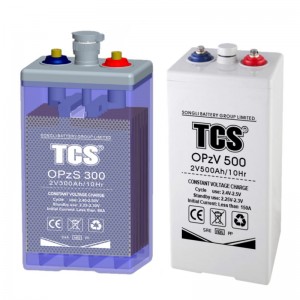When it comes to reliable and long-lasting energy storage solutions, OPzS and OPzV batteries have become increasingly popular in various industries. These advanced battery technologies offer efficient and sustainable power storage, making them suitable for a diverse range of applications. In this comprehensive guide, we will delve into the world of OPzS and OPzV batteries, highlighting their key features, advantages, and differences, while emphasizing their importance in the realm of energy storage.
OPzS Batteries: Unwavering Power and Durability
OPzS batteries, also known as flooded batteries, are renowned for their superior performance and longevity. These batteries are composed of lead-acid cells immersed in a liquid electrolyte, which consists of a water and sulfuric acid solution. The key advantage of OPzS batteries lies in their robust construction, enabling them to withstand harsh environmental conditions and frequent deep discharges.
One of the distinguishing characteristics of OPzS batteries is their long service life. On average, these batteries can last anywhere between 15 to 25 years, making them a cost-effective choice for long-term energy storage. Additionally, OPzS batteries boast a remarkable cycle life, allowing them to endure numerous charge and discharge cycles without compromising their overall capacity.
OPzS batteries are highly reliable, offering a consistent energy output even under demanding conditions. Their deep discharge capabilities further enhance their suitability for critical applications where uninterrupted power supply is crucial. Whether it's for telecommunication systems, off-grid solar installations, or emergency backup systems, OPzS batteries have proven to be a reliable energy storage solution.
OPzV Batteries: Sealed Efficiency and Maintenance-Free Operation
OPzV batteries, on the other hand, employ a gel electrolyte instead of a liquid electrolyte found in OPzS batteries. This gel form provides several advantages, including enhanced safety, reduced maintenance requirements, and improved resistance to vibration and mechanical stress. The sealed design of OPzV batteries prevents any possibility of leakage, thus making them suitable for sensitive environments such as data centers and hospitals.
The gel electrolyte in OPzV batteries ensures a low self-discharge rate, allowing them to remain charged for extended periods without any adverse effects on their capacity. Moreover, OPzV batteries are characterized by their high efficiency, enabling them to deliver optimum performance in terms of energy density and overall charge acceptance. These qualities make OPzV batteries an excellent choice for applications where space is limited, and high energy density is paramount.
Like OPzS batteries, OPzV batteries also offer an extended service life, typically ranging from 12 to 20 years. This longevity, combined with their maintenance-free operation, makes OPzV batteries a favorable choice for applications where minimal upkeep is desirable.
OPzS vs. OPzV Batteries: Understanding the Differences
While OPzS and OPzV batteries share similar characteristics, they do have a few distinct differences that set them apart. The primary dissimilarity lies in the electrolyte composition – OPzS batteries use a liquid electrolyte, whereas OPzV batteries adopt a gel electrolyte. This distinction affects their self-discharge rate and maintenance requirements.
Another notable difference is their design and construction. OPzS batteries typically come in a modular format, allowing for easy replacement and expansion when needed. OPzV batteries, on the other hand, have a monobloc design, making them more suitable for compact installations and environments with limited space availability.
For applications where frequent deep discharges are anticipated, OPzS batteries offer optimal performance and are often the preferred choice. However, if maintenance-free operation and a sealed design are prerequisites, OPzV batteries are the ideal solution.
Importance of OPzS and OPzV Batteries in Energy Storage
As the demand for reliable and sustainable energy storage solutions continues to rise, OPzS and OPzV batteries play a crucial role in meeting these requirements. Their high energy density, long service life, and deep discharge capabilities make them invaluable for a wide range of industries.
In renewable energy systems, such as solar and wind farms, OPzS and OPzV batteries act as a buffer, storing excess energy during periods of peak production and supplying it during times of low or no generation. This ensures a constant and uninterrupted power supply, reducing reliance on the grid and providing stability to the overall energy system.
Telecommunication networks heavily rely on OPzS and OPzV batteries to guarantee seamless communication, especially during power outages or in remote areas where grid connections are unreliable. These batteries provide a dependable backup power source, enabling businesses and individuals to stay connected when it matters most.
In critical infrastructures like hospitals, data centers, and emergency backup systems, OPzS and OPzV batteries play a significant role in ensuring uninterrupted operation. Their ability to withstand deep discharges and provide consistent power output during emergencies is vital for critical life-saving equipment and maintaining the functioning of essential services.
Conclusion
OPzS and OPzV batteries offer efficient, reliable, and sustainable energy storage solutions for a variety of applications. While OPzS batteries excel in deep discharge cycles and rugged environments, OPzV batteries provide maintenance-free operation and enhanced safety through their gel electrolyte design. Both battery technologies have a long service life, making them valuable assets in installations where long-term power storage is essential. Understanding the differences and specific requirements of each battery type allows industries to choose the most appropriate solution for their energy storage needs. Whether it is renewable energy integration, telecommunication systems, or critical infrastructure, OPzS and OPzV batteries continue to play a vital role in powering our modern world.
Post time: Sep-26-2023

